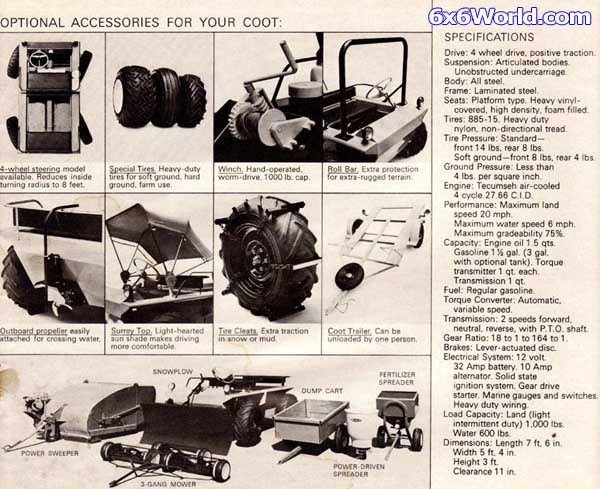Riding an ATV is a fun way to explore the outdoors, and getting all geared up with appropriate riding clothes and equipment is all part of the excitement. But before you set off into the beckoning trails, it’s essential to learn how to drive an ATV safely and correctly.
To drive an ATV, start with pulling in the clutch. Next, shift from neutral gear to first gear, then press the throttle slowly while gradually releasing the clutch. Once the ATV starts moving, you can shift through the gears to speed up. Brake the front wheels by squeezing the right hand lever. Brake the rear wheels with the right foot pedal.
If you’re new to ATVs and would like to learn how to drive one, here’s a quick start guide to get you started.
To get started, ensure you have a suitable ATV that beginners like yourself can drive. Try sitting on the ATV to feel how comfortable it is, and make sure that you can easily reach the handles and gears. Also, you want to avoid using an ATV that’s too powerful, big, or unwieldy, as this could end up causing an accident while you’re still learning.
For more info on buying an ATV check out my How To Shop For an ATV Guide.
When you start riding, select a wide, flat, and open space without hazards or obstacles in the way (fallen trees, sticks, ditches). Until you’re comfortable using the ATV’s controls, you may want to avoid steep terrain, vehicles, or objects that would require you to navigate around them.
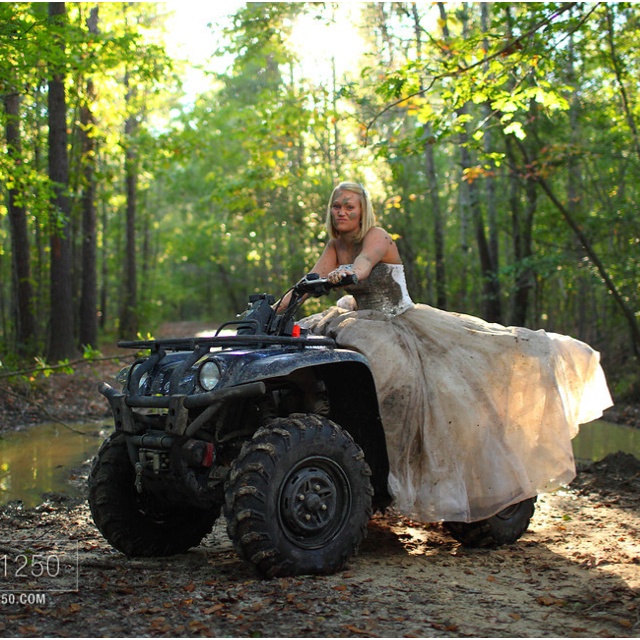
For a beginner, it might be easier to learn how to drive using an automatic ATV. However, with practice, a manual clutch isn’t a bad choice either. The biggest hurdle is getting the coordination between your hands and feet right.
Here’s a helpful overview video before we get started, with more info below:
Now, here’s a step by step guide on how to drive an ATV:
To start the ATV, insert the key into the ignition, then turn it to the start position.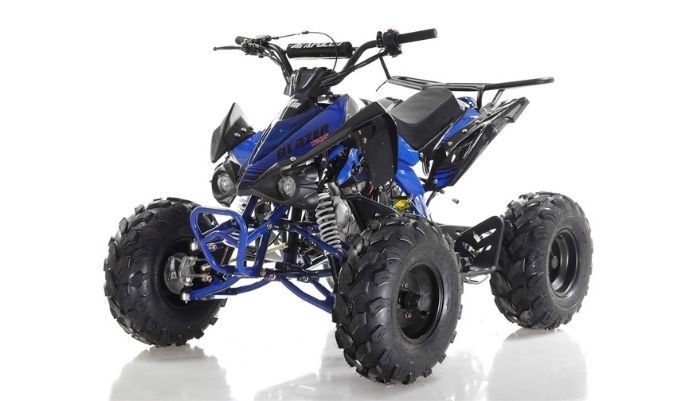 Next, press the start button located towards the right of your handlebars. Once the engine starts, let it run for a minute or so to heat up. You can leave the engine running for up to 5 minutes before riding when the weather is cool.
Next, press the start button located towards the right of your handlebars. Once the engine starts, let it run for a minute or so to heat up. You can leave the engine running for up to 5 minutes before riding when the weather is cool.
To set the engine into neutral, pull the clutch lever located on the left handlebar. This action places the engine into neutral gear, allowing you to shift gears as you increase your speed. Use your left hand to engage the clutch and put the engine into gear to start moving. Remember that while in neutral gear, the ATV can continue moving forward, but you won’t manage to speed up at all. That’s because to start moving, you need to put the engine into first gear.
With the clutch still engaged, shift gears with your left foot by lifting the left footrest lever. Next, release the clutch to place the engine into gear, enabling you to keep moving.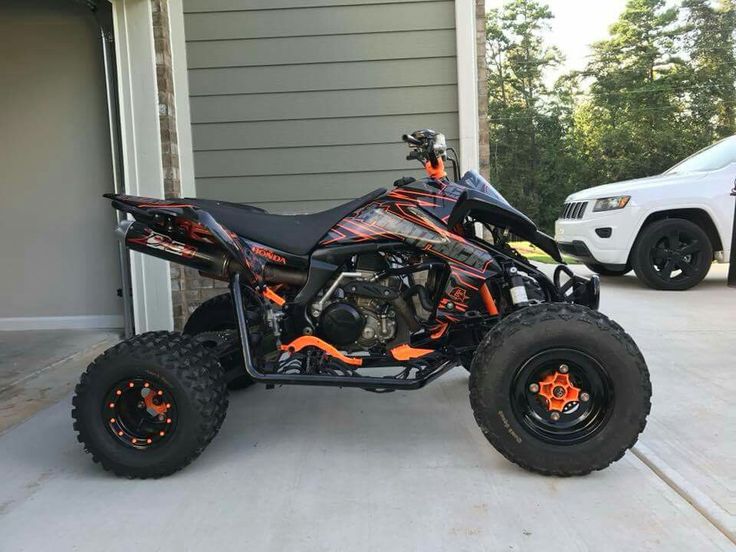 Then, shift upwards into higher gears as your speed increases.
Then, shift upwards into higher gears as your speed increases.
Practice this move by riding around, increasing your speed gradually, and shifting into higher gears. This practice will help you get familiar with driving your ATV. Remember that you also don’t need to concern yourself with shifting gears if you’re riding an automatic transmission. Still, work on a gradual speed increase to get more comfortable driving the ATV.
When slowing down, you’ll need to downshift to lower gears. Downshifting allows you to match the gear with the ATV speed. Hold the clutch using your left hand and use your left foot to press the gear shift lever down before releasing the clutch. As you shift back to lower gears, you’ll sense the lever click down. It’s a good idea to downshift one gear at a time to give your engine time to adjust to the lower gears and slower speeds.
Levers on the right and left sides of the handlebars control your ATV’s brakes. The right-side lever controls the rear brakes, while the left-side lever controls the front brakes. Start to brake with the rear wheels first by squeezing the right handle. To add additional braking power, slowly press the left handle.
The right-side lever controls the rear brakes, while the left-side lever controls the front brakes. Start to brake with the rear wheels first by squeezing the right handle. To add additional braking power, slowly press the left handle.
You want to avoid squeezing both brakes at the same time since you might topple over the handlebars. Furthermore, your ATV could also flip over if you press into the left handle to brake only the front wheels.
To distribute weight and prevent your ATV from tipping over, shift your weight into the direction you’re turning. For example, if you’re turning right, lean towards the right side of your ATV. Practice distributing your weight so that you can start taking turns at much higher speeds. A helpful trick here is to stand up from the seat when taking hard turns so you can lean further.
While you can take ATV driving lessons under an experienced rider, enrolling in a driving course is the best way to receive proper training. Once completed, you may also need to complete a certified course to enable you to drive your ATV legally.
Once completed, you may also need to complete a certified course to enable you to drive your ATV legally.
Below is a short video explaining how to drive a manual ATV:
ATVs are powerful machines that can become unstable or difficult to manage at high speeds. They can also reach speeds of up to 65 mph (104.6 kph) or higher. And, their high center of gravity, lack of roll bars, seatbelts, or safety cages means they can tip or even roll over easily.
As such, you need to protect yourself from rollovers, collisions, and injuries that may come from riding ATVs. The following tips are useful in helping you stay safe on four wheels:
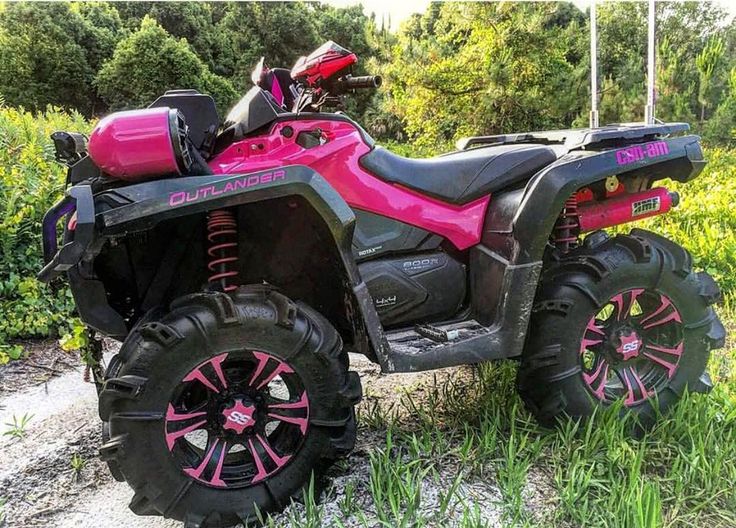
Mastering any skill takes time, and learning how to drive an ATV is no exception. However, with regular practice, you’ll acquire all the skills you need for a fun, long ride. Try out different terrains and work on your coordination to enhance your ATV riding abilities. Soon, you’ll be ready to go on off-road adventures.
Try out different terrains and work on your coordination to enhance your ATV riding abilities. Soon, you’ll be ready to go on off-road adventures.
Sharing is caring!
You are finally going to start getting serious about four wheeling and need to learn everything you need to know? There’s a lot more to it than you might think! You have to get the right ATV and gear, learn how to operate the quad, learn proper riding technique and figure out how to properly care for your new four wheeler (If you are buying a used ATV, you must review this guide). There is a lot there, but we are going to walk you through all you need to know and point you at some great resources you should review. Happy riding!
What you needLuckily, you don’t need a whole lot to get started. Really, you need the ATV and you might be able to get going, but there are some other things that are going to keep you safe and make the experience a lot more enjoyable.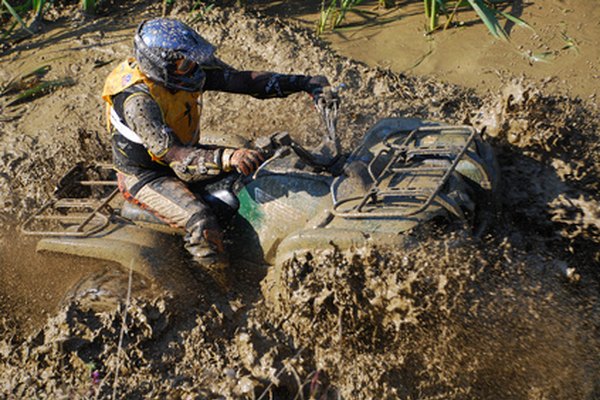
This is the most important step to getting started. You have to get yourself a four wheeler. While it is tempting to just jump on the first good deal you find, you want to take the time to figure out what machine is going to be best for you and the riding you want to do.
There are two types of ATVs – sport quads and utility quads. Sport quads are typically not best for new riders. They are fast, can handle some jumps, are usually two wheel drive, have manual transmissions (you have to operate the clutch and shift), and are much lighter than the utility quads.
The utility ATVs usually have automatic transmissions (just like an automatic car, you don’t have a clutch and don’t shift), are heavier, come in both two-wheel drive and four-wheel drive, have more storage space, a more comfortable seat, and are more compatible attachments such as winches, snowplows, rack boxes, chainsaw holders, gun racks, and so forth. You also may want to consider if a UTV (side by side) is a better fit for you. These are typically better for hauling cargo or people, but there are some awesome sport options available too. See more about whether an ATV or UTV is right for you with this guide.
These are typically better for hauling cargo or people, but there are some awesome sport options available too. See more about whether an ATV or UTV is right for you with this guide.
Once you figure out whether you want sport or utility quad, you have to figure out what size ATV you should get. This is going to depend on a lot of different factors. First of course is your size, but you also have to look at where you are going to ride, how you are going to ride and whether you are going to let others ride your ATV. We go into a ton of details in this guide to picking the right sized ATV, but a summary is below.
50-70cc-young children under 12 that are learning to ride.
90-125cc-children under 16 that are still learning to ride.
200-300cc-bigger teens that know how to ride, smaller adults that are learning, wont be riding for long periods of time
400-500cc – price point shoppers, ranchers, acreage owners, farmers, new riders, light trail riding, most females
550-700cc- – aggressive trail riding, hauling, taller people,
700-1000cc – aggressive trail riding, mud play riding, average male rider, hunters, hill climbers, speed demons, stream crossers
There are going to be some other key considerations you need to look into when picking out an ATV.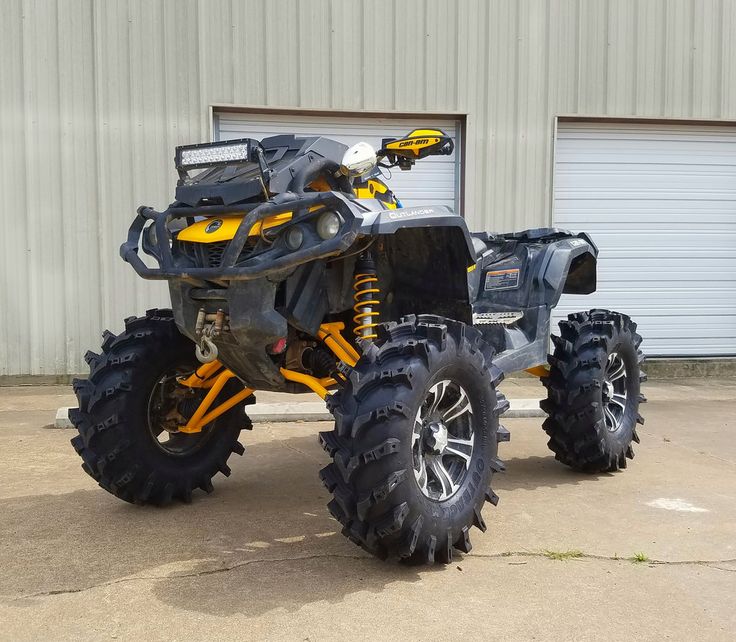 You will want to read this article to help you make a decision on all the other features, but a few of the most important considerations are the following:
You will want to read this article to help you make a decision on all the other features, but a few of the most important considerations are the following:
Once you pick out the right ATV, you are ready to get riding; however, you should get some of the essential safety gear to keep yourself safe and make your ride more enjoyable. For starters, get yourself a good helmet, goggles, boots, and gloves.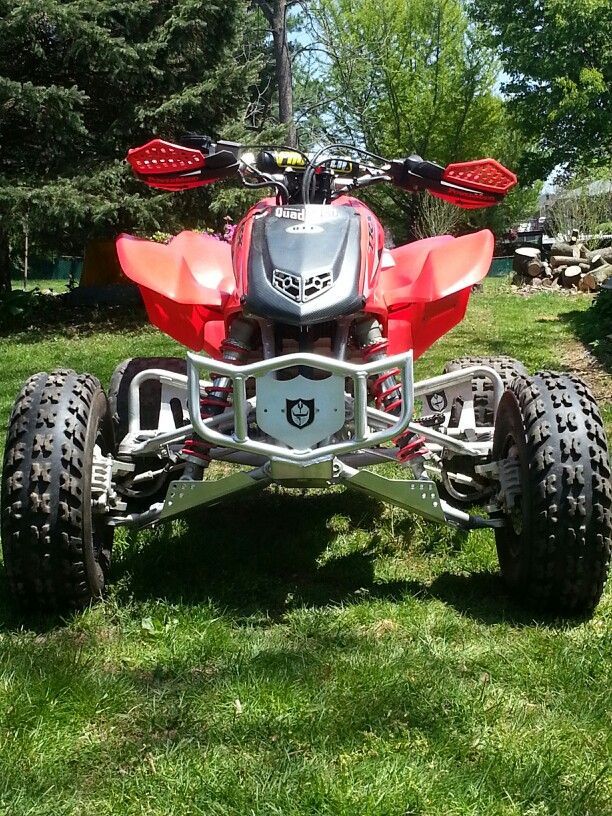 Though expensive, you’ll be happy you got them if you wipe out. Of course, the best place to pick out the gear you need is our Recommended Gear page!
Though expensive, you’ll be happy you got them if you wipe out. Of course, the best place to pick out the gear you need is our Recommended Gear page!
You shouldn’t get to bogged down with buying a lot of accessories or modifications when you are first starting, but there are just a couple we think are worth considering.
First, a winch is a relatively cheap investment that can be especially helpful for a new rider on rough terrain. If you slide off a trail or get yourself stuck in the mud, the winch can pull you out of the tough spot. To learn more about picking out a winch and see a great one we recommend for most riders that is under $200, check out our recommendations.
The other accessory that could be good for a new rider are nerf bars. As a new rider, you’ll have enough to think about without worrying about what to do with your feet. With Nerf bars and heel guards, you’ll get the stability you need so you can ride more comfortably.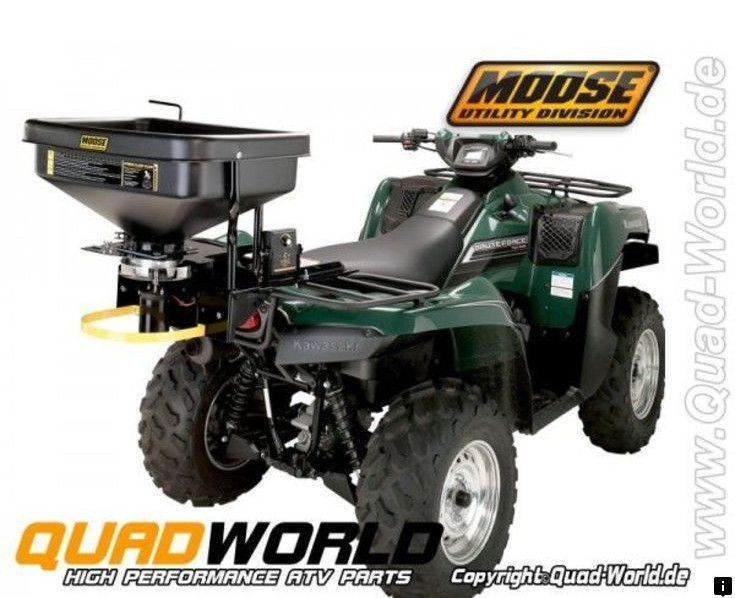 Nerf bars are like giant foot pegs that help you to easily keep your feet in place during your ride. Heel guards to the same thing on the other side of your foot, namely keeping your feet where you want them to give you more control while riding.
Nerf bars are like giant foot pegs that help you to easily keep your feet in place during your ride. Heel guards to the same thing on the other side of your foot, namely keeping your feet where you want them to give you more control while riding.
Before you jump on your ATV and start riding, there is some preparation you should undertake, especially if you have never ridden an ATV before.
Take a safety courseDepending where you are at, you should be able to find an ATV safety course. These courses will teach you how to safely ride an ATV. One of the best options for every new rider is to enroll in an ATV Safety Institute (ASI) ATV RiderCourse. It’s not expensive, and if you’re buying a new quad, you may get a certificate to take the course for free. Courses are usually broken up into three or four weeks, with them lasting two and a half hours a night once a week.
Read the Owner’s ManualI know that owner’s manuals are typically the most boring thing you could possibly read, but it is so important. The owner’s manual on your new quad should provide operating tips, riding tips and directions on what you should and shouldn’t do with the ATV, especially before your first ride. Some manufacturers require certain steps be taken before starting the engine for the first time. The owner’s manual is also your go-to for maintenance schedules and buying the right replacement parts.
The owner’s manual on your new quad should provide operating tips, riding tips and directions on what you should and shouldn’t do with the ATV, especially before your first ride. Some manufacturers require certain steps be taken before starting the engine for the first time. The owner’s manual is also your go-to for maintenance schedules and buying the right replacement parts.
As you read the manual, sit on the ATV and get a good feel for where all the controls are. Most quads have a thumb throttle, not a twist throttle like dirt bikes. The throttle is typically located on the right side of the handlebars. The left handlebar of the ATV will probably have the electric start, headlight controller, a kill switch, and the front brake.
The rear brake is usually a foot pedal on the right side floorboard. The gear shift lever is also usually on the right side (except for Yamaha, which has theirs on the left) that has high, low, neutral, and reverse.
You also want to make sure your ATV is going to be comfortable for you once you learn where everything is and how it works.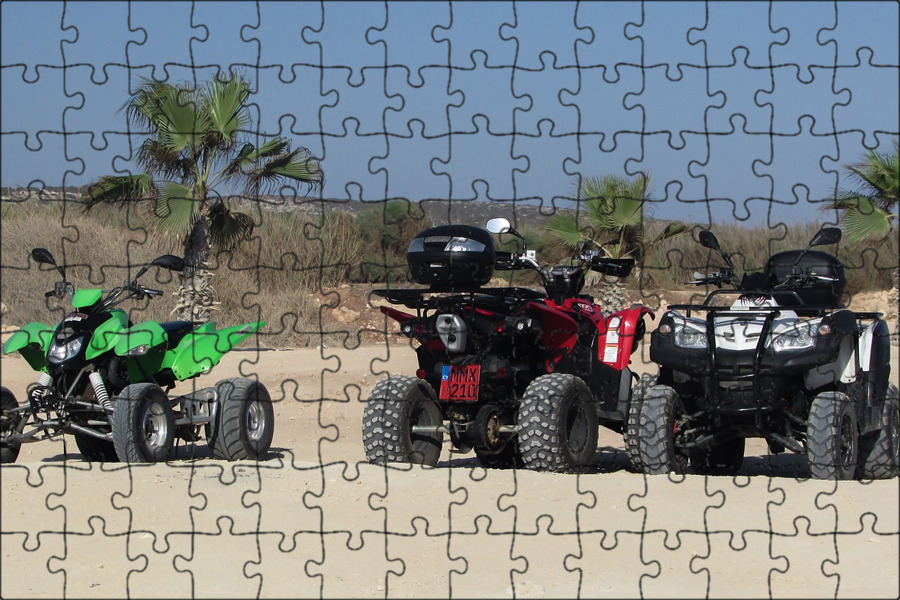 It’s unlikely you’ll sit on your ATV and be perfectly comfortable with the location of the handlebars and controls. Following your owner’s manual, adjust the levers, clutch and handlebars to your liking.
It’s unlikely you’ll sit on your ATV and be perfectly comfortable with the location of the handlebars and controls. Following your owner’s manual, adjust the levers, clutch and handlebars to your liking.
Not all states require registration or licensing, but some do. Some other states require a land-use permit or another type of land pass if you want to ride on public lands.
Other state rules and regulations regarding ATV safety may include guidelines for the required safety equipment (like helmets, gloves and riding boots), age restrictions, licensing, sound levels and safety training.
It is a pain to try and figure out what exactly is required since every state is different, but we did all the painful work for you. Check out our guide to the ATV laws for every state.
Besides state requirements, you also need to learn the requirements to operate an ATV on public land and roads. In addition to the state laws we linked to above, we published a guide for riding on federal lands.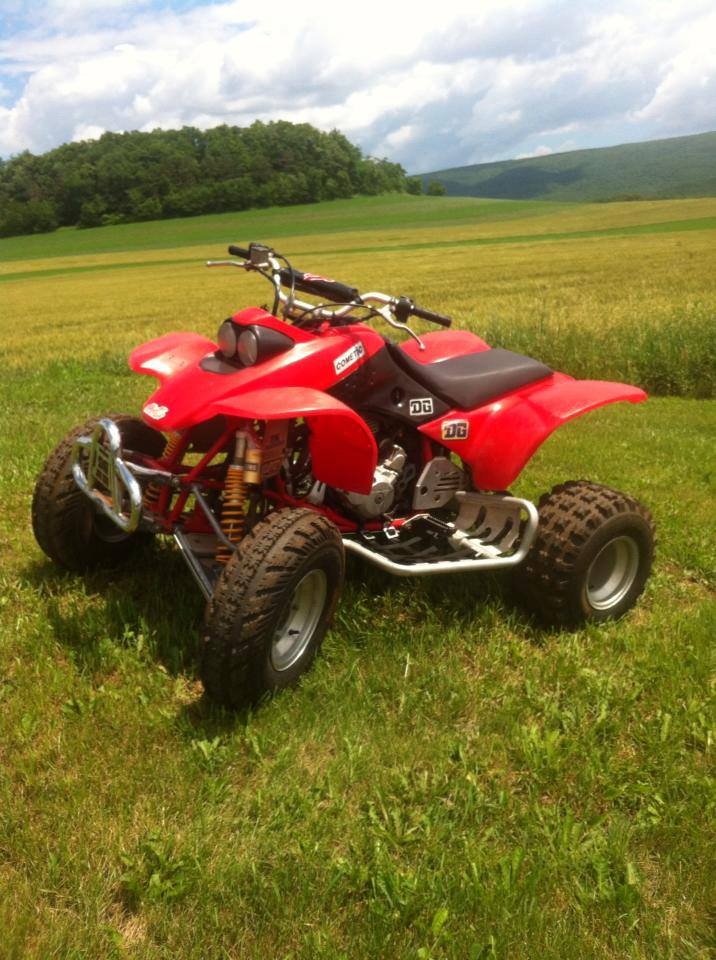
Depending on the condition of your four wheeler, there is going to be a different level of maintenance you need to handle, but even with a brand new machine, there are a few basic things you should do before your start riding. To work on your ATV and check everything, you should get a few needed tools as well.
Check fluid levelsYou should always check the oil, fuel, and coolant levels to make sure they are adequate, and you should also look for any leaks in the various systems.
Check your air filterYou want to make sure your air filter is both clean and oiled. Even if your ATV is brand new, the air filter will be clean, but it might not be oiled. If you’re brand new to ATV riding, then oiling your air filter may be unfamiliar, but it is essential. If your air filter is dry, use some air filter oil on it before putting it back in the airbox. If the air filter is really dirty, swap it out for a new one.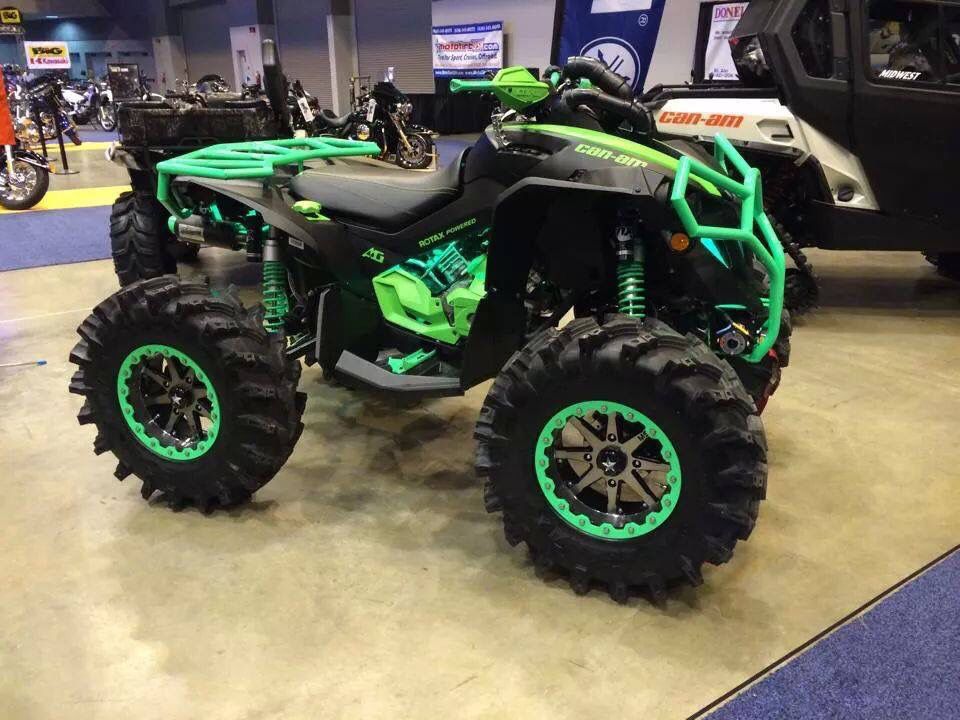
Checking your tire pressure should be one of your regular checks before every ride. Especially before your first ride on an ATV, there is a good chance you will need to add quite a bit of air before that first ride.But don’t add too much. Over-inflated tires are more likely to pop or get damaged and under-inflated tires can ruin the rims. You’ll need a low-pressure tire gauge to get the job done.
Gas and oilIf you are like me, you excitedly ride your ATV until it runs low on gas for the first time, then think for the first time about whether you can put regular gasoline in your ATV. The answer is mostly simple luckily. For most four-stroke ATVs, you can use regular gasoline, grade 87 or above, from your local gas station. If you don’t know the recommendation for your ATV, opt for 89 grade unless the 87 grade is ethanol free. For oil, simply use 10w40 and change it a couple times a year. If you have a two-stroke ATV, the answer is a little more complicated. On a two-stroke ATV, you will need to mix gasoline with oil specifically designed for two-stroke engines and then use that gasoline-oil blend in your ATV. While the answer seems mostly simple, there are a lot more considerations with putting gasoline into an ATV than with filling up your average car, but you are in luck because we have answered all the questions you could have about gas and oil already.
On a two-stroke ATV, you will need to mix gasoline with oil specifically designed for two-stroke engines and then use that gasoline-oil blend in your ATV. While the answer seems mostly simple, there are a lot more considerations with putting gasoline into an ATV than with filling up your average car, but you are in luck because we have answered all the questions you could have about gas and oil already.
While you are checking the tire pressure, check the wheel nuts and axle nuts to make sure they aren’t loose or broken. Even new ATVs frequently arrive with loose lug nuts, so it is always smart to tighten and properly torque (you’ll want our favorite torque wrench) each lug nut on all four wheels Then, grab the tires and rock them back and forth to try and detect worn-out bearings. Next, check all the levers like the brake levers, throttle, and foot
Loading and TransportingNow that you have an ATV, you have to get your ATV to the riding location. Unless you are just going to be riding around your own property, you need to get a handle on how you are going to load and transport your quad.
Unless you are just going to be riding around your own property, you need to get a handle on how you are going to load and transport your quad.
One of the easiest solutions is to load the ATV in a truck bed, assuming you have a truck. Unless you have a short bed, you are going to mostly be okay. We have a guide for basically every truck and every bed combination out there and what size ATV you can fit in the bed.
A couple things to keep in mind when loading an ATV in a truck bed-you don’t want to let the ATV sit on your tailgate if it is too heavy, you shouldn’t load the quad by yourself, and you shouldn’t ride the ATV onto the truck. You also want to make sure you get a decent set of ramps. We have some guidelines you should follow in our recommendations.
If a truck bed isn’t going to work for you, you need to figure out what size trailer you need. We have all kinds of guidelines you should review when you are buying a trailer, but the short answer is that you can fit many single ATVs in a 4 x 6 foot trailer, although a 5 x 8 foot trailer will fit any single ATV much more comfortably.
For two ATVs, you will need at least a 6 X 12 trailer loading nose to tail or 6 X 10 foot if you can load side by side. You can also get away with a 6 X 10 trailer for most ATVs by loading one of them sideways and one normally. If you are getting into larger ATVs, bigger than 550cc I would say, you need to look at the dimensions to see if you are going to need something even bigger like a 7 X 12. For three or more ATVs, You are going to want to run your measurements, but will likely need at least something 16 feet long
Starting your ATV
How to start your ATV is going to depend on what type of quad you have. Luckily, If you have read your owner’s manual, you should already know how to start your quad and get it running.
Typically, an ATV starts either by a pull cord or by turning a key and pushing the starter button. If you are just starting off, hopefully you bought an ATV with an automatic transmission. If that is the case, you simply need to put the ATV in gear, usually by moving a lever forward.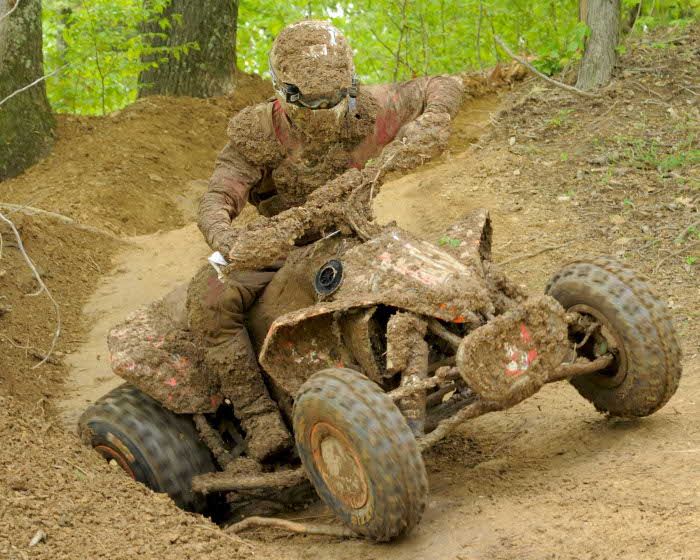 Then, slowly press the throttle to get going, which is usually done by pushing a thumb lever forward or twisting the right hand grip.
Then, slowly press the throttle to get going, which is usually done by pushing a thumb lever forward or twisting the right hand grip.
Before you do anything aggressive or head out on a trail, you are going to want to practice a little bit to get familiar to your quad and how it handles. We recommend finding a large, flat, open area to practice that is free of obstacles and hazards. In addition, practicing on a hard dirt surface will make it easier for you to learn the basic maneuvers. Do not practice on public roads or paved surfaces as accidents are much more common on paved roads since ATVs are designed for off-road use only.
If you are teaching a child to ride, there are a lot more considerations you should review in our key tips for teaching children to ride ATVs.
As you practice, work on getting a feel for the acceleration and braking, then move on to turning. After you’ve gotten completely familiar with the ATV, including where the controls are, how to operate everything naturally (without thinking about what does what), and how to turn comfortably using your body-weight, then you can start opening up a little bit at a time.
Once you are comfortable in an open area, start with some simple trails before slowly advancing to more complicated terrain.
As a new rider, you need to stay completely focused on what you’re doing and where you’re going. Don’t drive so fast that you outpace your line of sight or your brakes. Practice starting, stopping and turning over and over until it just comes naturally. There’s nothing that will increase your riding ability like lots of practice.
PostureHaving the correct riding posture will help you to easily operate the controls and help you react more quickly when shifting your body weight. You should practice with the proper posture from the very beginning to ensure you don’t learn bad habits. Proper riding posture, when you are traveling straight, includes:
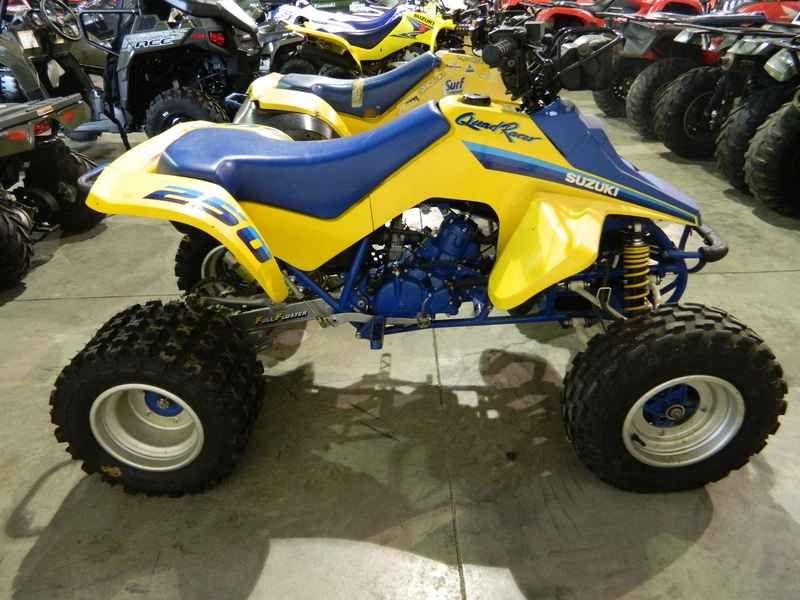 It gives you less control over the ATV and proves painful when you hit a bump.
It gives you less control over the ATV and proves painful when you hit a bump.Standing up on an ATV may seem a little wild for a beginner, but it is actually safer in most situations. If you’re in for just a casual stroll down a trail, then your are more than okay to take a seat for your ride.
On the other hand, if you’re wanting to ride at some higher-speeds and take some sharper turns, you need to stand-up. It’s makes it easier to control your quad, reduces fatigue and makes for a better ride. When you stand on an ATV, you want to hover just above the seat, keeping your elbows out and your knees bent.
TurningTurning in an ATV is an art form. As you get more advanced, you can get more aggressive with your cornering and have a lot of fun. When you are just starting, you should stick to the basic turning techniques appropriate for ATVs being ridden at low to moderate speeds:
When you are just starting, you should stick to the basic turning techniques appropriate for ATVs being ridden at low to moderate speeds:
Most ATVs have a reverse gear. Every ATV I am aware of comes with a rev-limiter that is activated when the ATV is in reverse to limit the speed you can drive in reverse. While that may seem annoying, it is actually super helpful because it is really difficult to handle an ATV in reverse and you will quickly lose control if you are going to fast in reverse.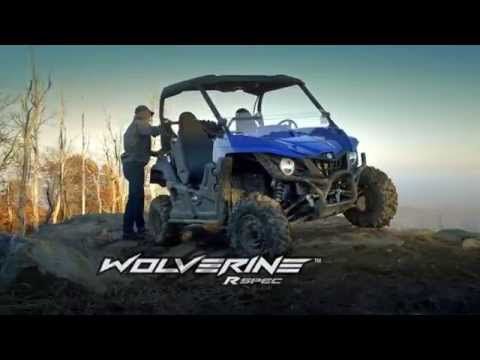 If you really want to go faster in reverse, many ATVs come with the option to reverse the rev-limit via an override button. This can be helpful if you a stuck in a tough situation like a mud bog or snow bank. Unless you are in one of these tricky situations, just leave the rev-limiter in place and rever slowly and carefully, especially while you are still getting accustomed to riding ATVs.
If you really want to go faster in reverse, many ATVs come with the option to reverse the rev-limit via an override button. This can be helpful if you a stuck in a tough situation like a mud bog or snow bank. Unless you are in one of these tricky situations, just leave the rev-limiter in place and rever slowly and carefully, especially while you are still getting accustomed to riding ATVs.
One of the big choices we discussed above is whether you want four-wheel or two-wheel drive. If you opted for a 4WD ATV, the first thing you will need to figure out is when you should use the four-wheel drive. Four-wheel drive is going to be beneficial when you are on rough terrain or tackling obstacles such as hillclimbs, logs, ledges, snow, ice, mud bogs or rock fields.
You don’t want your ATV in 4WD all the time though. You will definitely feel the difference. When your quad is in 4WD, the steering is going to be rougher and your engine works harder, impacting your gas mileage.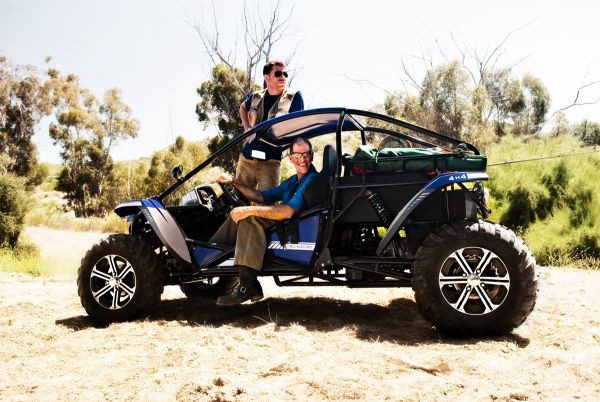
If you are going to do any kind of trail riding, you will have to learn how to climb hills. Climbing hills improperly could cause loss of control or cause the ATV to roll over on you. While climbing hills seems pretty easy, there are some key things you will need to learn and follow.:
The best technique for approaching an uphill climb is to:
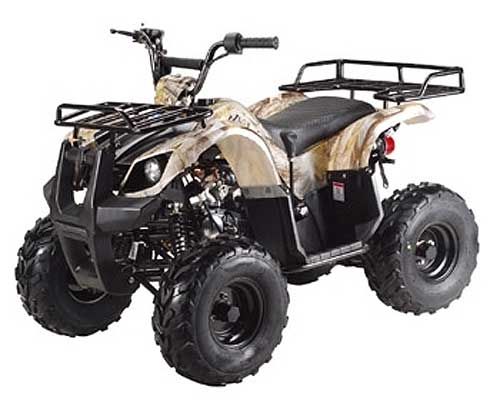
If you are cruising up the hill and then realize you do not have enough power to reach the top of the hill, you need to know how to handle the situation. Ideally, you will come to this realization while you still have forward momentum and enough room to turn around and head back down the hill. To execute a safe U-turn:
If you are in the unfortunate position where you are riding uphill and don’t realize you won’t make it until you lose all forward momentum, follow these steps:
 Do not allow the ATV to roll backward.
Do not allow the ATV to roll backward.Always check the terrain carefully before you start down any hill. Choose a downhill path that is as straight as possible, with a minimum of obstacles and the least steep as possible. Shift your weight to the rear of the machine and use a low gear.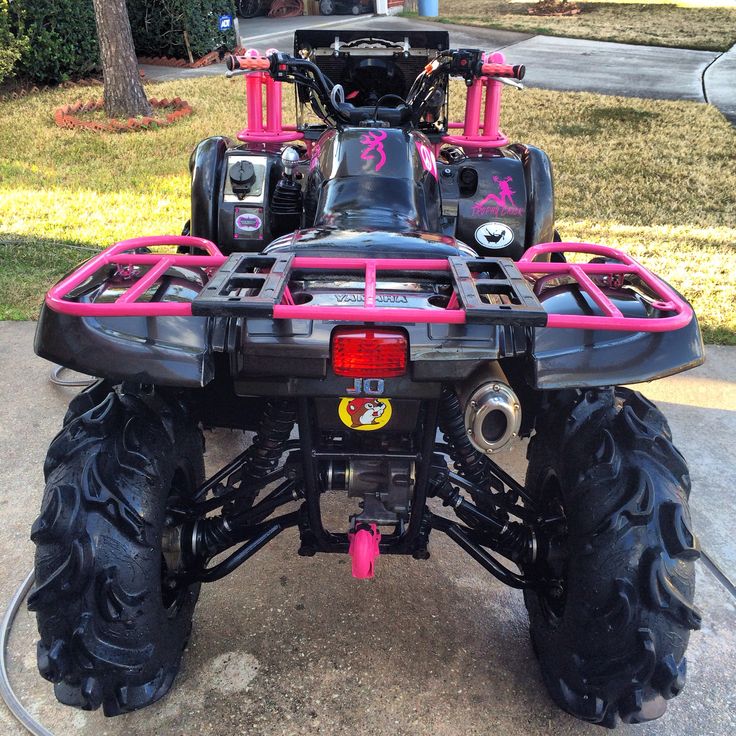 On steeper downward slopes, straighten, but do not lock, your knees and elbows. You should use both brakes to gradually slow down, but whatever you do, always apply the rear brake. If you only apply the front break, you are going to flip right over your handlebars, likely getting crushed by your quad
On steeper downward slopes, straighten, but do not lock, your knees and elbows. You should use both brakes to gradually slow down, but whatever you do, always apply the rear brake. If you only apply the front break, you are going to flip right over your handlebars, likely getting crushed by your quad
Most of the time when you are going up or down a hill, you will want to go across the slope rather than directly up or down the hill. This is called traversing and requires different techniques.. Before getting in the technique, you should never traverse slopes with excessively slippery, rough, or loose surfaces.
If you have found a safe slope for traversing, here’s the technique you should follow:
 If the terrain does not permit, dismount on the uphill side immediately and try to just hold onto your ATV..
If the terrain does not permit, dismount on the uphill side immediately and try to just hold onto your ATV..Unless you are on a well maintained trail, you are likely going to run into some obstacles out on the trails. Whether it’s a rut, boulder, or log, there’s a way to get over it safely. Unless it is too big of course. Generally, you shouldn’t try to get over anything thicker than 2 feet (think telephone pole) unless you have a big quad and lots of experience. If the obstacle isn’t too big, just follow these guides for getting over small obstacles blocking your path:
 This is especially important if you are jumping a wet log as it is easy to get stuck sliding down the log when the first wheel goes over, leaving you with nothing to do but quickly reverse out of the situation.
This is especially important if you are jumping a wet log as it is easy to get stuck sliding down the log when the first wheel goes over, leaving you with nothing to do but quickly reverse out of the situation. While having four-wheel drive is absolutely beneficial for getting through mud, it is not essential in most situations. Without 4WD, you basically have two options to get through a mud puddle.
First, the most fun and most dangerous, and least recommended, way is to fly through it at top speeds, enjoy the wave of water hitting you, and pray you don’t hit something buried under the water or mud.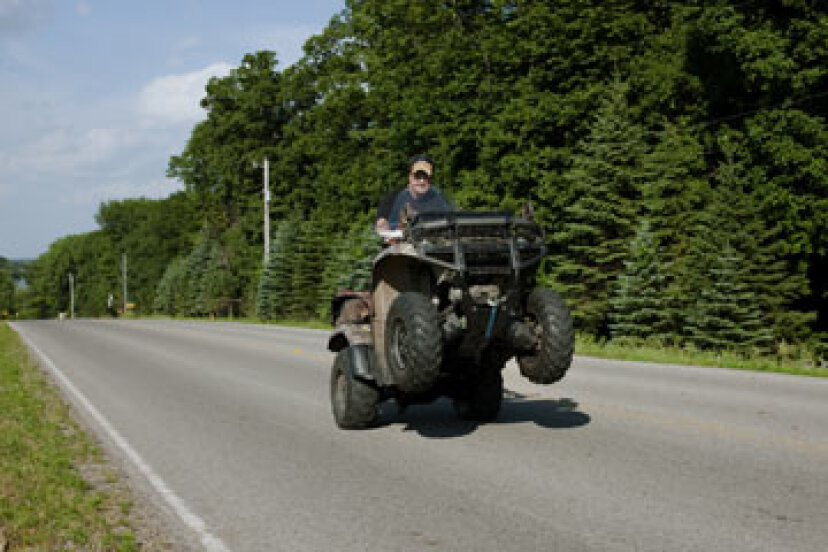
Second, the safer method is to find ruts hopefully made by a previous rider. Go through the mud puddle with your tires on top of the ruts, one in the middle of the two ruts, and one on the outside. As you are working through the mud, don’t give it to much gas or you will spin your tires. This is going to get you all muddy and cause you to slip into the rut or to form your own new rut.
If you do start to get into a rut, you want to get out as soon as possible before you get stuck. In this situation, you are going to have to give it some gas, let the tires spin, and rock your quad back and forth until the tires catch something solid and shoot you forward.
Ending your rideAs you are ending your ride, you will want to put the ATV in neutral when you come to a stop. This will prevent you from accidentally accelerating as you dismount. Once you have come to a complete stop, set the parking brake as directed in your owner’s manual.
Once you are done riding for the day, your last thought should be toward keeping your ATV safe from thieves.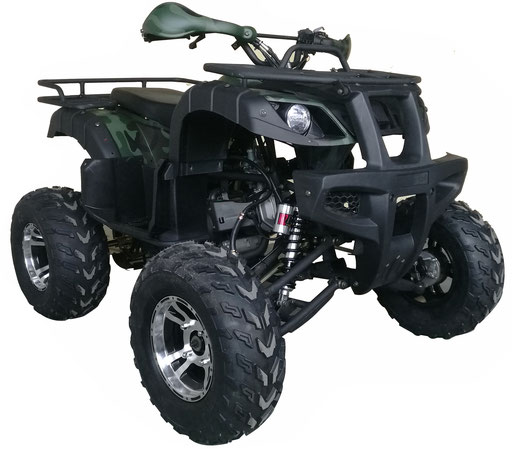 Unfortunately, ATV theft is way too common, and you should absolutely take the threat seriously. We even published 21 tips you should be following. For example, you should always remove the key, lock the ATV to something solid and keep it close your house or camp just for starters.
Unfortunately, ATV theft is way too common, and you should absolutely take the threat seriously. We even published 21 tips you should be following. For example, you should always remove the key, lock the ATV to something solid and keep it close your house or camp just for starters.
Interested in outdoor activities on ATVs, but would like to know more about them? In today's article, we will talk about how it all starts, namely, information about the rights to drive such vehicles. More specifically, the following are the main points:
Only a driver's license, including an ATV/snowmobile license, gives official permission to drive it.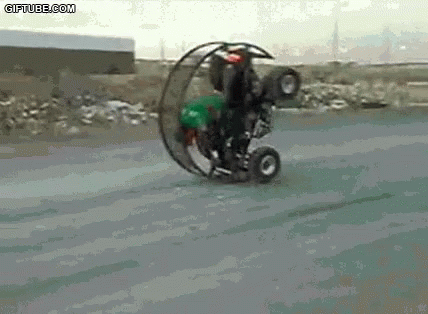 In total there are five categories in the driver's license: A, B, C, D, E (each category also has subcategories). It is worth saying that since 2014 certain changes have been made. Such innovations include the right to drive an ATV, which is valid in 2016 and 2017.
In total there are five categories in the driver's license: A, B, C, D, E (each category also has subcategories). It is worth saying that since 2014 certain changes have been made. Such innovations include the right to drive an ATV, which is valid in 2016 and 2017.
A quadricycle is a motorized vehicle with four wheels (tricycles have three of them, respectively), which are intended for driving on public roads and which are generally subject to registration with the traffic police.
That's what it is - an ATV.
For example, the Soviet SZM/S3D motorized carriage, the so-called "Invalidka", can be considered a quadricycle. Maybe someone remembers such a "blunder" of Soviet engineers with a chirring engine from a motorcycle, but on four wheels.
Tricycle, as a mode of transport, is quite common in Asian countries as a cargo-passenger three-wheeled motor transport. Among our most famous analogues is the Soviet scooter "Ant".
But a motorcycle, but a three-wheeled one, can only be seen here in big cities, metropolitan areas or at biker rallies. And then - you have to try. This is because such tricycles are found with us, and not only with us, with motorcycle gourmets or with garage “Kulibins”.
By the way, a large ATV is often called a Road ATV. In Western countries, this type of transport is abbreviated as GG-Quad, or Moto Quad, as an option - Quad Bikes.
No doubt, modern three-wheeled units look very dignified and spectacular, but such a miracle will cost almost the price of a normal car. It does not add a plus that, as one of the owners said, unlike nimble two-wheeled motorcycles, traffic jams for such a device present the same problem as for a car, but there will be much less comfort in it. Especially if we are not talking about a trip out of town in warm weather, but about rain and bad weather.
Roughly, you can say this: a quadricycle is a three- or four-wheeled motorcycle or minicar. For all this, you need to get the same driver's documents as for a motorcycle or car. When buying such a vehicle, note that it must be accompanied by a TCP (Vehicle Passport).
For all this, you need to get the same driver's documents as for a motorcycle or car. When buying such a vehicle, note that it must be accompanied by a TCP (Vehicle Passport).
If anyone has any doubts whether it is necessary to obtain a license for an ATV, then we will immediately answer this way - yes, they are certainly necessary. An ATV is a full-fledged means of transportation and in order to competently and correctly manage it, specific skills are needed, the presence of which confirms the rights
This means that the driver must have a legal document obtained exclusively from officially registered establishments. If a person managed to get such rights in some unofficial, that is, not licensed institution, this threatens with complications, up to the complete deprivation of rights. Therefore, we repeat that the rights to an ATV are officially required, both by law and to obtain the necessary knowledge of the rules of the road.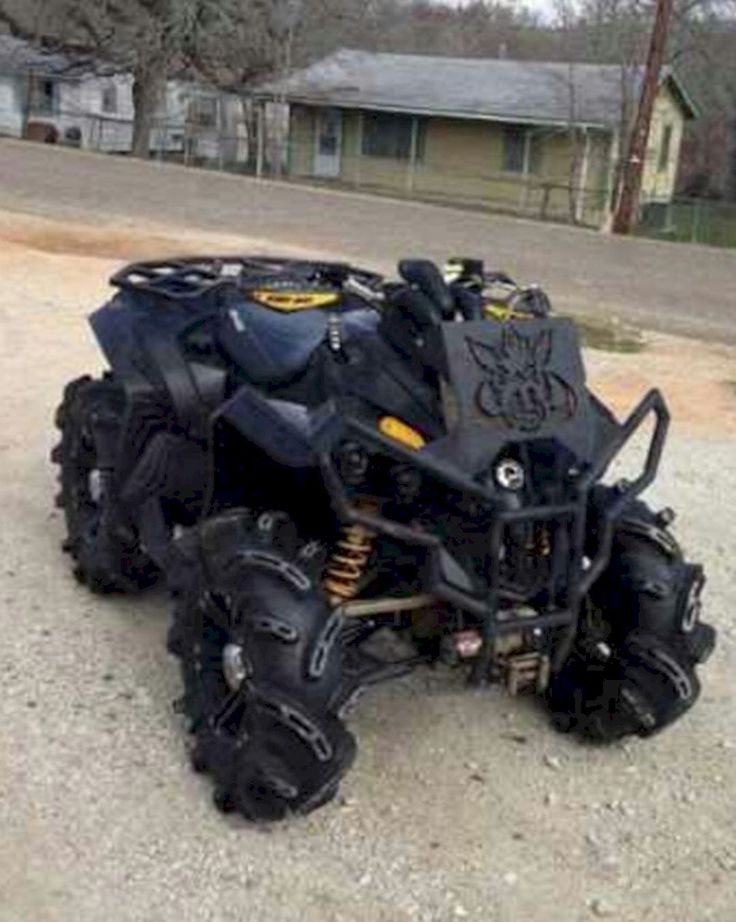
Cross-country driving is popular among jeepers today. But not every car will be able to overcome Russian impassability. And if we are talking about your favorite hunting or good fishing? Here, too, it is necessary to get into the most deaf thickets. To perform such special operations, an all-terrain vehicle, which is equipped with a caterpillar suspension, is perfect.
Overcoming forest thickets in expensive jeeps will cost the owner not only a pretty penny, but sometimes even a golden ruble))). But what can I say: not all, even the most fashionable equipment, will rush everywhere without special training. In this case, the quadric is a very profitable, acceptable and very passable solution. But here again a dilemma arises - some lovers of the same winter fishing or hunting think at a decisive moment - so what is better to take, a snowmobile or an ATV? This already needs to be decided individually.
To begin with, let's find out in detail this question: what rights are needed for an ATV / snowmobile in 2017.
Here we will talk about the certificate of the tractor driver, which, in fact, is the right to drive an ATV. Such a document gives the right to drive self-propelled machines. In our case, this is the category "A I".
Quad bike driving license template.
This category is specifically designed for an automated motor vehicle (which is our ATV) that is not intended to be driven on public roads or trails. It is worth remembering that the answer to the question “Do I need a license to drive an ATV?” implies another nuance.
Under this provision, such a vehicle (including an ATV) must meet a maximum speed limit of 50 km/h or less.
However, the old rules have undergone some changes in 2014 and such innovations are valid in the current 2017.
One more thing to add: holders of category “A” motorcycle licenses received before November 05, 2013 have a reason to be happy - any volume was allowed!
Therefore, starting from April 2014, every driver will receive a brand new driver's license. Innovations affected not only the appearance of the document, but also the emergence of new categories and subgroups of driver's licenses. Regardless of innovations, information is always relevant where and how to get rights.
Innovations affected not only the appearance of the document, but also the emergence of new categories and subgroups of driver's licenses. Regardless of innovations, information is always relevant where and how to get rights.
Those who are interested in the question of where and how to get a license for an ATV should know that in 2017 you can get the category “A I” presented above only when the future owner turns 16- th years. For more information on how to get the rights to an ATV, it is recommended to read our further material. This will give you the most complete information about getting a quad bike license.
In order to receive category “A I” in 2017, you will need:
The certificate must state without fail that the candidate is fit to drive a specifically self-propelled vehicle, and not an ordinary car of the corresponding category.
Please note! From November 28, 2015, self-training for obtaining a tractor driver-machinist certificate is prohibited.
It is now mandatory to study at a driving school in order to get an A I driving license. Such training can be carried out by:
Now it becomes clear that you need to go to a driving school and prepare for a quad bike driver's category.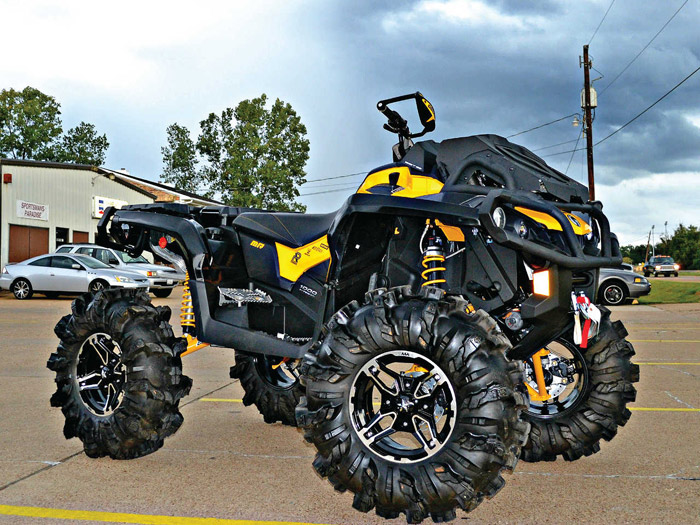 Today, most driving schools offer one or two day training courses, after which you can go to take exams in the category "A I".
Today, most driving schools offer one or two day training courses, after which you can go to take exams in the category "A I".
Well, in the final, we recall that according to the current traffic rules, both quadricycles and quad bikes are classified as motor vehicles. Such a simple wording means that the drivers of such units, in accordance with clause 2.1 of the SDA, must carry with them, and, if necessary, transfer to the traffic police officers for verification the documents established by law. In the absence of such documents, the violator faces an administrative fine.
If the device is not registered in accordance with the law, and the owner of the vehicle cannot confirm his right to his property, such equipment is subject to detention and transfer to a penalty parking lot.
In the case when a three- or four-wheeled motor transport is included in the "moped" category, there is no need to register such a vehicle.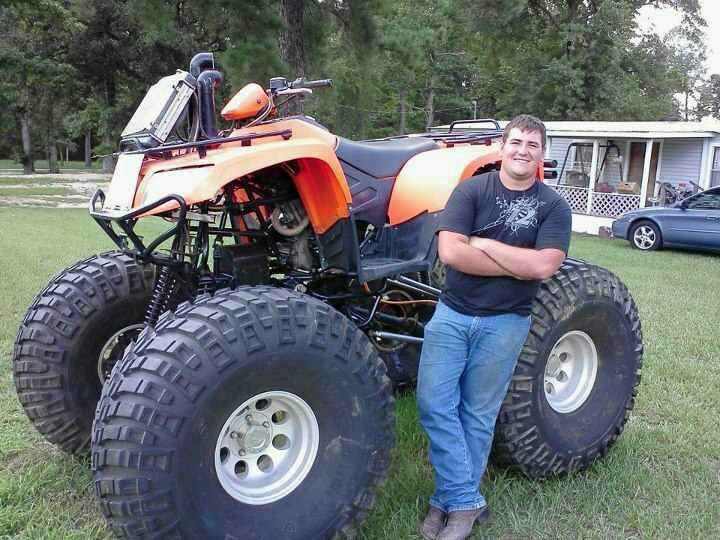
Now you know what it takes to drive an ATV or snowmobile. In general, obtaining a license is a fairly quick and simple procedure, so we recommend that all off-road enthusiasts go through it and officially get a license for an ATV.
Still have questions?
Ask your questions here and our auto lawyer will answer all your questions for FREE.
Last update: 04-09-2020
History
○ New Stels scooters are available in Moscow with delivery to your region! Big choice. Best price guarantee!
The very first all-terrain vehicle was made by the Japanese company Honda in 1970. Then it was not yet an ATV, but a three-wheeled vehicle with a 4-speed gearbox and a 90 cc engine. Honda successfully patented it and became the exclusive owner of the rights to the ATV, both in design and in the location of the engine. However, at 19In the 80s, several large Japanese manufacturers (Yamaha, Kawasaki), with the exception of Suzuki, rushed into the same niche after Honda, trying to copy the device. And this was extremely difficult, since Honda had a patent, so it was necessary to make changes to the technical parameters that made it unlike the original, which not everyone and not always succeeded.
Honda successfully patented it and became the exclusive owner of the rights to the ATV, both in design and in the location of the engine. However, at 19In the 80s, several large Japanese manufacturers (Yamaha, Kawasaki), with the exception of Suzuki, rushed into the same niche after Honda, trying to copy the device. And this was extremely difficult, since Honda had a patent, so it was necessary to make changes to the technical parameters that made it unlike the original, which not everyone and not always succeeded.
While all other well-known companies at the suggestion of Honda experimented with three-wheeled versions, trying to improve the technology that had already existed by that time for more than a decade, Suzuki engineers decided to become innovators and patented a four-wheeled version (embodied in the QuadRunner LT125 model), which at the same time proved to be significantly more successful than competitors' tricycles. The first ATV was introduced by Suzuki at 1982, and not only survived the three-wheeled versions, but also forced all the leading motorcycle companies to turn to four-wheeled vehicles.
Soon, in 1987 Suzuki released their new model LT500R QuadRacer, which in many ways exceeded even the wildest (at the time) expectations. The engine has become even more powerful, and the volume has increased to 500 cubic meters. It was this ATV that earned the nickname "Quadzilla" (by analogy with Godzilla) for its power and speed characteristics. During the tests, he showed a maximum speed of 130 km / h and at that time became the fastest ATV in the world. True, already at 1990 Suzuki discontinued this model, and the Quadzilla became a true legend among ATV connoisseurs.
At the same time, the practical direction of the development of ATVs began to gain momentum. The manufacturers of this equipment are convinced that this transport can be used not only for entertainment, but also for purely utilitarian purposes. In 1986, Honda introduced the FourTrax TRX350 4x4, ushering in the era of all-wheel drive ATVs (previously they were all rear wheel drive). Following Honda, other manufacturers turned to the same topic, and since then all-wheel drive models have remained the most popular on the market.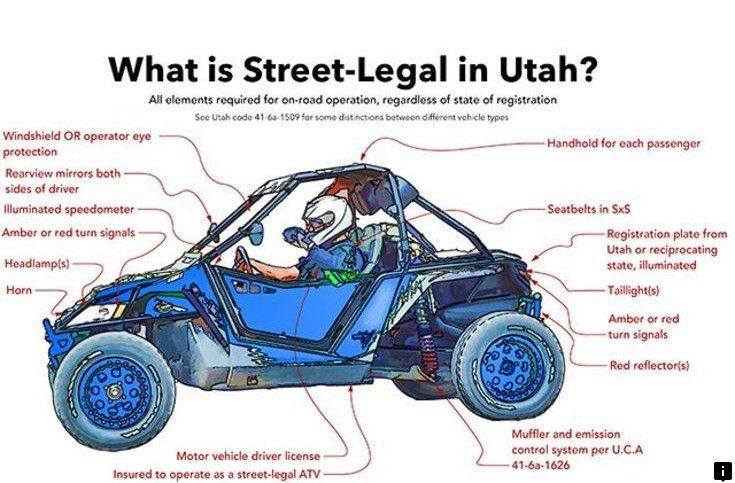
Manufacturers of ATVs
The main manufacturers of ATVs are primarily Japanese companies Honda, Kawasaki, Suzuki and Yamaha, American companies Arctic Cat and Polaris Industries, Canadian company Bombardier Recreational Products (under the Can-Am brand). ATVs are also produced by many Chinese and Taiwanese companies, the most popular of which are Kymco (Taiwan) and Hensim (China). As for other, less well-known companies, such equipment is produced in Germany, Italy, South Korea and even ... in Russia.
The world's leading ATV manufacturers introduced ATVs to the Russian market through official (or unofficial) dealers. At first, our customers were somewhat skeptical of the new technology, but gradually, with an understanding of all the unique off-road properties of ATVs, they became more and more popular. www.motofriends.ru conducted an analysis and found out that our domestic manufacturers also decided to introduce their models to the market. "Quadro" is produced in Kaliningrad (LLC "Baltmotors"), Yaroslavl (JSC "Avtodiesel-Service"), Tutaev (JSC "Tutaevsky Motor Plant").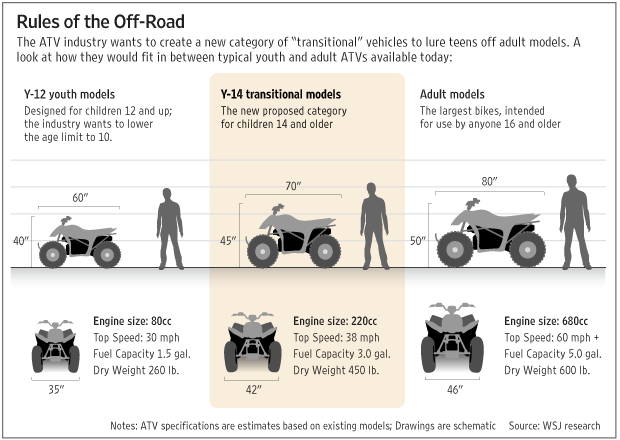 Of course, until they compare with their foreign competitors, but they can easily come in handy at work.
Of course, until they compare with their foreign competitors, but they can easily come in handy at work.
Models
All ATVs can be divided into two large groups - sports and utility. Sports models are usually smaller and lighter and have small wheels. The “sporty” drive is on two wheels, not four, they quickly pick up speed and can accelerate to 150 km / h. Sports models include motocross, cross-country, sand racing, hilly, ice and snow, speedway, trophy, drag racing and many more options. Some manufacturers single out tourist ATVs as a separate type - they are sometimes called sports-utility ones. These are the models that combine the advantages of both sports and utility options, taking the best from them. Such ATVs are often used for recreation and entertainment, including hunting and fishing.
If we talk about utilitarian models - they are significantly larger and heavier, have four-wheel drive, and the maximum speed usually does not exceed 100 km / h. Such ATVs can carry small loads and tow trailers. As additional equipment, winches, bulldozer knives, trailers and other equipment are supplied to them, which allows them to be used for working on personal plots and transporting goods.
Such ATVs can carry small loads and tow trailers. As additional equipment, winches, bulldozer knives, trailers and other equipment are supplied to them, which allows them to be used for working on personal plots and transporting goods.
There are also children's models of ATVs, which are small copies of models for adults. They are usually designed for children aged 10-15 years. Their maximum load is 60kg. They are quite simple in design, lack many of the options inherent in adult models, most often have a small (up to 50 cubic meters) engine and can accelerate to 60 km / h.
6 and 8-wheeled vehicles are distinguished into a special class. Usually these are machines with a full-fledged plastic case, which allows them to additionally play the role of an amphibian, i.e. overcome small water obstacles. These are multi-seat cars, most often designed for 4 people. They look a little ridiculous, like a trough on wheels, in addition, they are slow (40-50 km / h) and low-powered (up to 30 hp).
Recently, the ATV market in Russia has grown significantly. Undoubtedly, in the coming years, this trend will continue, sales will grow. When choosing the type of ATV, it should be borne in mind that it makes sense to take a sports ATV only if it is bought exclusively for recreational purposes, and if it is supposed to have fun in good weather and on a good dry surface. It is worth remembering that sports ATVs were primarily created for sandy coverage, and in our region, to put it mildly, there are not many sandy beaches.
Specifications
Over the years, a consistent ATV design concept has developed. The rear suspension is spring-loaded, it includes a stabilizer that securely keeps the car from tipping over off-road.
The wheel formula of the vast majority of ATVs is "4x4", however, simpler models and sports cars designed for relatively good tracks can have only one drive axle. Rear-wheel drive ATVs usually have slightly worse off-road performance, but better road handling, higher reliability and lower cost than all-wheel drive versions. But all-wheel drive "quads" are still in great demand. Recently, the Big Boss-500 model with a 6x6 wheel formula from the American company Polaris has appeared in the world of four-wheeled motorcycles. But this is not the limit! For some models, the wheel arrangement may be "8x8".
But all-wheel drive "quads" are still in great demand. Recently, the Big Boss-500 model with a 6x6 wheel formula from the American company Polaris has appeared in the world of four-wheeled motorcycles. But this is not the limit! For some models, the wheel arrangement may be "8x8".
The heart of the car is a motorcycle, usually a single-cylinder engine (2-stroke or 4-stroke) with a capacity of 50-750 cc. (most often 250-500). Depending on the expected modes of operation, the cooling system can be air or liquid. The air cooling system copes with its functions quite well if the engine does not have to be operated in extreme conditions for a long time. If you intend to use the ATV for long periods of muddy or steep inclines, or for hauling heavy loads, then you should consider buying an ATV with a liquid-cooled engine. ATVs most often have an automatic transmission. However, sports models have manual gear shifting - so there is less loss of power.
Motor power ranges from 4 to 70 horsepower (most often 20-50 hp).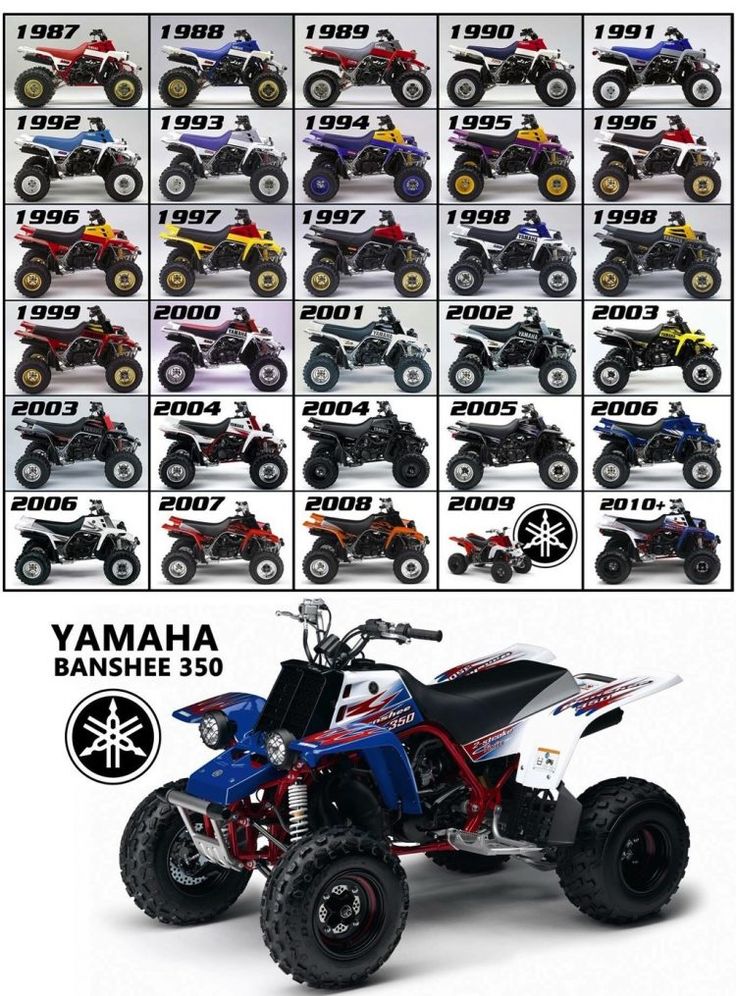 In combination with a powerful suspension, this provides excellent all-terrain qualities for ATVs!
In combination with a powerful suspension, this provides excellent all-terrain qualities for ATVs!
When choosing an ATV, a number of questions will certainly arise: should a two-stroke engine be preferred to a four-stroke one, gasoline over diesel, water cooling over air?
Two-stroke motors are used mainly on sports models. They work harder, vibrate more and consume more fuel, but at the same time their traction characteristics are higher. Diesel is chosen by those who need an ATV as a labor force. It is suitable for moving heavy objects, but at the expense of comfort and speed. Air-cooled is less of a hassle, but in extreme heat, you can run into overheating problems. A significant drawback of ATVs, in addition to the high price, is the presence of only one seat.
Safety
Many people, believing that driving an ATV is easy and simple, neglect elementary safety rules. Although you don't need a driver's license to ride an ATV, that doesn't mean it doesn't require any skill at all.